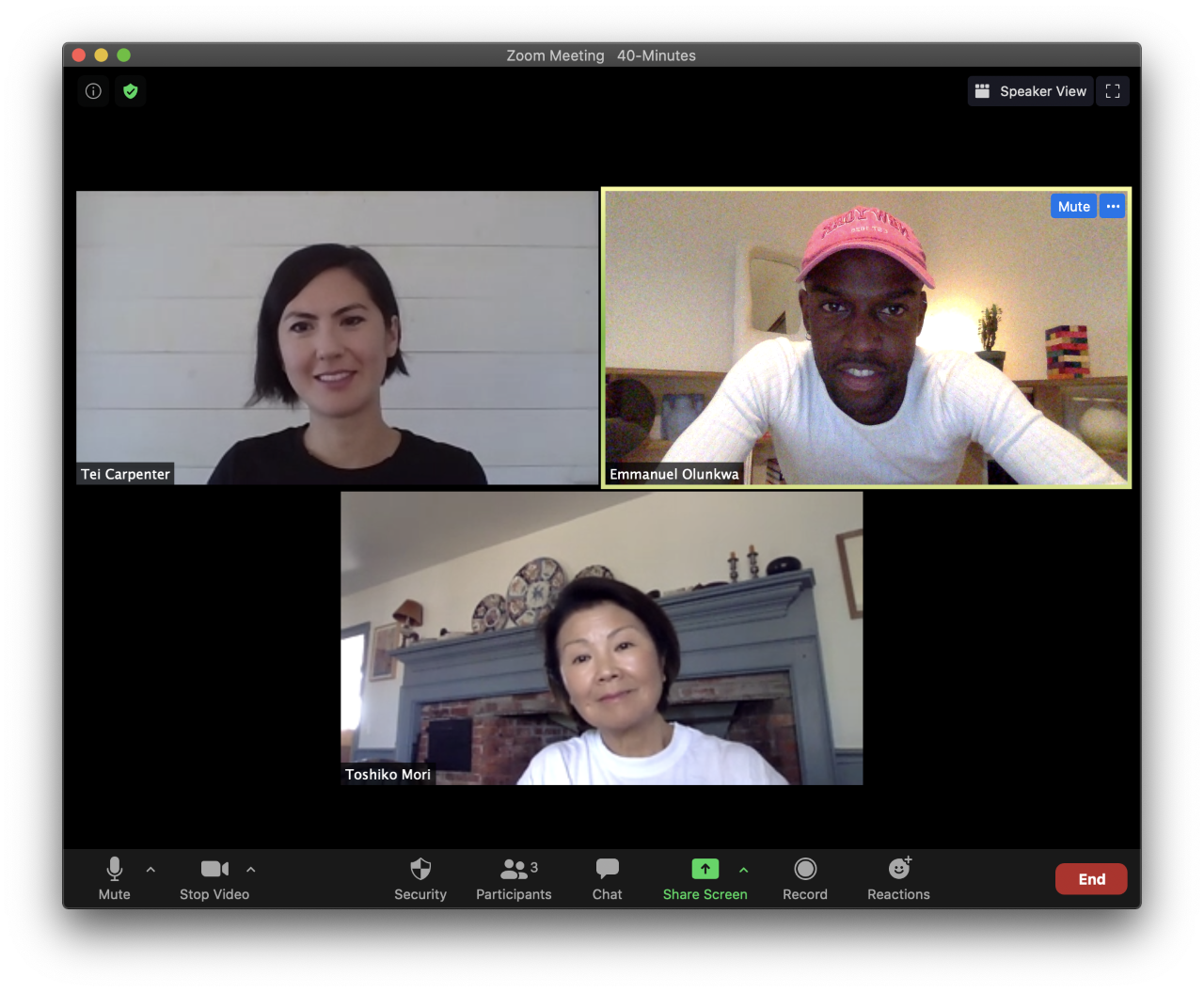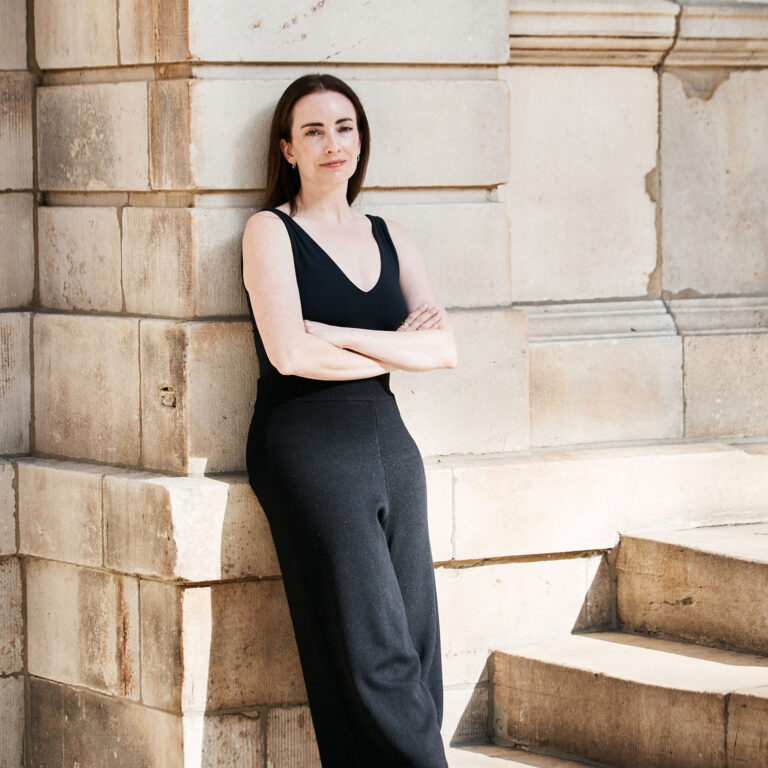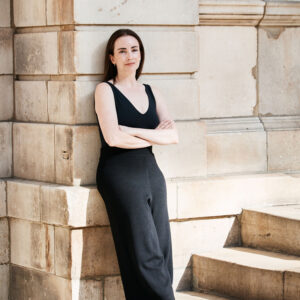
This interview was conducted pre-COVID-19, during a time when the world was moving and stillness meant something different and required more of an effort—it was accidental. Stillness was the moment one collected shortly after making the morning train ride during rush hour. Stillness was intimate, private; it wasn’t obvious to anyone outside of you and your world view. Over the last few months things have shifted. People have died. We all now have different relationships to our homes and intimacy feels and sounds different. I spoke to mother-and-daughter architects Toshiko Mori and Tei Carpenter about their individual practices, the Disneylandification of a world once known and how the term architecture itself has taken on new meaning in our current climate.
Emmanuel Olunkwa: What is architecture to you?
Tei Carpenter: For me, architecture is about designing spaces and spatial systems that can benefit society and envisioning new ways to engage and inhabit the world. Architecture and thinking architecturally can occur at many scales, whether it’s through the design of buildings, rooms, furniture, infrastructure or environments.
EO: You studied philosophy and art before coming to architecture, it seems like thinking through the framework of architecture allowed you to investigate those ideas.
TC: In college, I did a Liberal Arts degree in Philosophy and studied visual art and architectural history. One of my favorite professors at Brown, Dietrich Neumann, had a passion for the histories, narratives and stories that are embedded in architecture, which he passed on to his students—we learned about buildings but also about the processes of making and the life of the buildings themselves. We even took classes in the Philip Johnson List Art Center, said to be built on top of the former site of H.P. Lovecraft’s home which stands on the traditional homelands of the Narragansett and Wampanoag peoples. There was an entire history embedded just in the classrooms that we sat in.
I think that it’s fundamental to think about architecture as a framework, like you say, that brings together types of expertise and can be informed by other disciplines like philosophy and visual art. With architecture, we’re immersed in it in our daily lives and it can inform how we could rethink the way that we live, especially in a moment like today with so much uncertainty.
EO: What did architecture mean to you when you first started out and what does it mean to you now?
TC: It’s always been a lens to see the world as I was growing up, especially since I was aware of it from an early age. Increasingly, I think about the role of architecture in relationship to the environment and its impact on the climate crisis—the materials we use, construction and demolition waste and the possibilities for how to reuse and reimagine the building stock and the materials that already exist in the world, not starting from scratch.
I’ve also been thinking more about models for how architects practice,who we design for and how we can self-initiate and realize projects with each other and with communities. I think our younger generation is contending with a different set of stakes than generations before us about how to transform architectural practice and production to make it more relevant and equitable.
EO: When did you start to recognize who you were and what you were doing as an architect? Was it a self-proclaiming of, “this is who I am,” or when did you feel realized?
TC: I think it’s a work in progress, especially these days. To some extent I think about art practice where you have phases of work which eventually builds up to a body of work over time. With the pandemic there will definitely be adjustments to how we work and what we make, but I think it’s important to be persistent about the practice of architecture—showing up and continuing to do the work.
EO: What is teaching like for you? [Carpenter has taught at Columbia, University of Toronto and Rice University.]
TC: It’s a different experience from practice and often I feel as though I’m learning so much from the students—understanding their perspectives and their concerns. It’s a dialogue really. Teaching is also an opportunity to test research ideas in the studio setting that are related to practice so a relationship can build between the two as you’re trying out new ideas.
EO: Yeah, I think about being unable to know what’s going to come all the time. When you’re young, you’re so idyllic about everything and you’re constructing these ideas and fantasies of what your life is going to look like. You don’t necessarily know what the thing is or what the thing was that advanced or informed your career.
TC: Totally, and then it can take you a while to figure out what the thing was or what those key moments are that shift or adjust where you’re going.
EO: What are some of those moments?
TC: Well between the 2008 financial crisis, the 2016 presidential election, the climate crisis and now this global pandemic I think our generation has had a bunch of these recalibration moments. In some ways it clarifies what’s valuable and what’s important as we move ahead. The environment and what nature means is different from when I was in school, and reflecting on that has been important for me moving towards the future.
EO: I’m thinking of a woman who wrote in the ’50s and ’60s, and the first part of her novel was published in the New Yorker in the ’60s. I forget her name but she was so revolutionary and a necessary school of thought for architecture and environmental science…
EO: Do you mean Rachel Carson and her book Silent Spring? It’s funny you mention her and her work on DDT and the effect it had on the environment. She was essential because she was able to pose environmental questions and present issues in a way that was not only for scientists but for a greater public.
EO: Yes, she was an architect in her own right. I don’t think many people realize what an architect is and what an architect does.
TC: Sure, it can be about what type of buildings you make, but these days it’s also about the sociocultural and political implications of what we do, the decisions we make and what’s around us.
EO: The way you want your teeth to look, the t-shirt you’re wearing, the way you cut your hair and do your make-up, the way you walk…
TC: …right, and how you move through the city…
EO: And to think about why you prefer biking, to take the subway or a cab, versus flying frequently, these are all symptoms of the built environment. How you button your t-shirt—do you button bottom-up or top-down?—and thinking about the restrictions and limitations imposed on you through exercising and engaging each of these choices and how they make you feel.
TC: How could you read the paper without thinking of architecture—and how do you move through the world without thinking about it? To me that’s what’s different about what architects are thinking about now: how architecture is confronting its relationship to the climate crisis and its own politics, and how deeply embedded it is in it all. It’s an architectural problem and question so we have to frame it that way so we can act.
EO: What does architecture mean to you when you first started out and what does it mean to you now?
Toshiko Mori: Some things never change. I think we are still constructing buildings, trying to improve everyday life and trying to balance environmental concerns—these are all the basic principles of architecture. What has changed is increased awareness within the architectural profession, which is understood to be an elitist profession with people who are mainly wealthy white men. The heightened awareness is long overdue and we’re now seeing a change in who is getting hired and helming rigorous positions across the board.
EO: What are your concerns within architecture?
TM: I’m concerned with the social and ethical aspects of architecture. I studied at Cooper Union in the 1970s with John Hejduk and he taught us about formal strategies and where to look for meaning, the idea of occupants and political implications. Individualism and individual expression are what we brand ourselves with in architecture. So the idea of gender and race are a part of identity and, thinking of myself as a woman, I didn’t consider my subjectivity at the time, but in the last few years I’ve realized the importance of advocating for younger women rising in the ranks.
EO: What was it like attending Cooper Union?
TM: I started in the art school at Cooper Union and then I transferred over to the architecture department. I collaborated on a project with a friend in one of my seminars during my freshman year, and we painted one of the school hallways white. The dean of the architecture school asked us what we were doing and we told him the idea of the project. He asked to see my portfolio and if I had any interest in transferring to study architecture. I decided to leave the art program that year, and when I joined the architecture class there were only 18 of us, two of us being women.
EO: You and the late Diane Lewis made up the class, right? What was that being at Cooper in 1970?
TM: Well it was dealt with differently at Cooper because of Hejduk. He called everyone by their last name to neutralize our gender. It allowed for a certain type of freedom because gender differences are only highlighted by first names. Diane and I were very close and engaged with each other’s ideas; we didn’t think much about the gender disparity because we were concerned with doing the work.
EO: I think architecture is having a surge period because we’re talking about feminism, wage inequality, race and gender, but aren’t being specific enough. I think we should be talking through the lens of these identifications as architecture because it affects the way the world is structured, how we are expected to perform and the way we treat each other as civilians. How did you come to teaching?
TM: I’ve learned that if I didn’t teach, I would be so isolated and disconnected from the world. Working with students has changed how I engage in political issues because they bring their politics to class and the concerns of the students vary drastically from year to year.
EO: How did it make you feel to become the first woman to be tenured professor and then department chair at Harvard’s Graduate School of Design in the ’90s?
TM: I think if you have an interesting identity, like my multiple identities of being a woman and being Asian, you create degrees of diverse empathy that are critical for engaging humanity.
EO: I was just with Tei and she mentioned that you were also in Paris recently and saw the Charlotte Perriand show at the Louis Vuitton Foundation. I was there and learned that the new Gehry-designed building is on a 55-year lease with the city.
TM: Really? Wow, that’s surprising.
EO: They’re leasing the land and then the possession of the building goes back to the city. Museums are no longer built to serve a singular function.
TM: Yeah, it’s a mall now. Most of the institutions made now are only in place to sell something. Whether that is an experience or a product, they are expanding the ways they can appeal to consumers.
EO: It’s why I was drawn to Bois de Boulogne. I’m interested in this idea of Disneylandification. It’s a destination site that houses a variety of experiences—you go, and you’re meant to spend the day in the area in Paris and engage in what is being advertised as culture.
TM: It’s an amusement park. Yes, a lot of spaces now function as spaces of commerce where you are expected to spend a lot of money. It’s hard because in some cases the architecture suffers because design doesn’t lend itself to the capacity that these institutions house over the year. Tourist turnover is so high that they are grappling with how to articulate these architectural theories within the realm of tourism, and it’s reflected in the design itself. It’s such a shame.
EO: One of the things I’ve been thinking about recently is this idea of the budget in art spaces. Where you have these institutions spending hundreds of thousands of dollars to transport art across the world, insure it and then display it. And then when it comes to public or educational programming, there is not money to invest.
TM: These institutions are now treating patrons as consumers. There was a “Hyperallergic” article that came out a few weeks ago that addresses why the use of the word “public” was taken away from museums. I’m working on the Brooklyn Public Library right now and we’re thinking about how to engage the public as participants and not consumers, and not as recipients of obstructed expertise. Institutions have stopped using the word because they have become commercial entities, which is why they talk about budget, admissions and charge entrance fees. This is why artworks have become consumer products now.










 in your life?
in your life?

